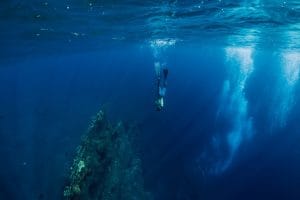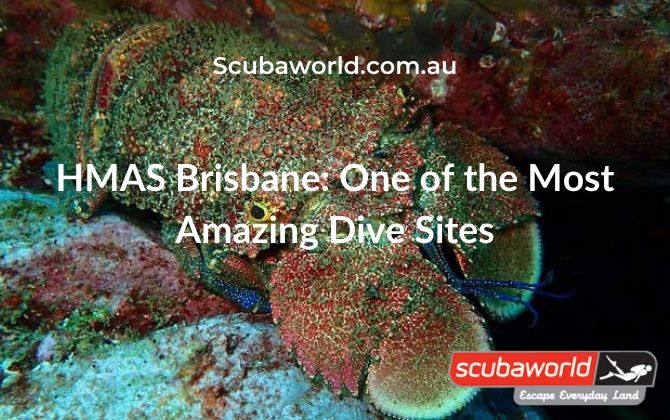
Why Scuba Divers Should Try Freediving: A Personal Perspective from an Scuba diving and Freediving Instructor
Hey everyone, I’m Matt, co-director of OceanSense Freediving here on the Sunny Coast. Over the

Australia is home to some of the best scuba diving sites in the world. That’s hardly surprising for the location of the world-famous Great Barrier Reef, but this location has a lot more going for it besides, including the iconic HMAS Brisbane.
A scuba site with unique origins, this location is now a regular contender among Australia’s top 10 diving sites, and anyone looking to make a splash in the Aussie sea will want to consider spending more than a little time here.
With fantastic conditions and stunning diving on offer, you definitely don’t want to miss out on your chance to get stuck into this relatively new Brisbane landmark. But, you don’t need to take our word for it. We’re going to dive right into why exactly HMAS Brisbane is one of the most fantastic diving sites out there right now.
To understand why HMAS Brisbane is getting so much scuba attention, it’s first worth noting how this site came to be. Most of us know that it’s a pretty new diving contender, but those visiting Australia for perhaps the first time might not be aware of the whole fascinating history.
While we won’t bore you by going all the way back, consider that HMAS Brisbane began its life as a missile destroyer way back in 1969. So follows years of service for the Australian Royal Navy and the nation on the whole. But, how did such an iconic ship go from this to its diving fate today?
For that, you need only think back to 2005, when long-winded debates ended in the decision that the preservation of this iconic piece of naval history might be best served under the waves. Yes, you read that right; we sank the HMAS on purpose to fulfil her diving dreams. And, goodness, was it the right decision!
Sunk to 27 metres in a conservation area off the Sunshine Coast in Queensland, HMAS now forms the impressive backdrop for one of the largest dive sites, and perhaps the only artificial creation of its kind.
These fascinating beginnings, and some amazing diving opportunities, have ensured the HMAS Brisbane a firm place on many a scuba bucket list, and that attention doesn’t look set to waver anytime soon.
If you’re planning a dive here in the near future, it’s best to be aware of and plan for the trip ahead of time. Firstly, it’s worth noting that, at 113 m in total length, the majority of divers find that at least two trips are necessary to get the best from their time here. So, make sure you book plenty of time for this excursion so you can see all the HMAS has to offer.
As you might expect from a hand-created diving spot, though, conditions here are generally fantastic year-round, with pretty much guaranteed visibility and next to no current. The dive has also been tailor-made for scuba-lovers of all abilities. Beginners can enjoy a surface dive where they admire the 15-metre-deep deck and all the marine life that has to offer. The more experienced divers visiting the site, however, can get deep inside the wreck itself, and even explore the boiler and engine rooms!
Fantastic conditions aside, the marine life on offer has also earned HMAS Brisbane its diving spots, and you can bet there will be plenty to see during any trip here. Despite only being seabound since 2005, marine offerings have gathered on this site at an astounding rate. In fact, the wreck itself is already covered by over 300 amazing hard and soft corals for everyone to enjoy.
As if that weren’t impressive enough, divers here are also commonly lucky enough to see 200 species of fish, and marine life such as –
If you plan long enough for your trip here, you could also enjoy further marine life wonders at nearby Mooloolaba or Flinders Coral Reefs. Pair all these trips into your HMAS focus, and you’re in for a pretty comprehensive Australian tour, that’s for sure.
Whether you’re a diving champion or a first-time tryer, HMAS Brisbane is waiting to reveal its treasures to you, and Scubaworld is here to make it happen. Simply click here to find out more about this astounding site, then book right up for a diving trip in a location unlike any you’re likely to have seen before.

Hey everyone, I’m Matt, co-director of OceanSense Freediving here on the Sunny Coast. Over the
Join us Thursday 30th Jan at 5:30pm to hear David Mullins talk about nudibranch defences
Dear members, I would like to take this opportunity to inform you about a few